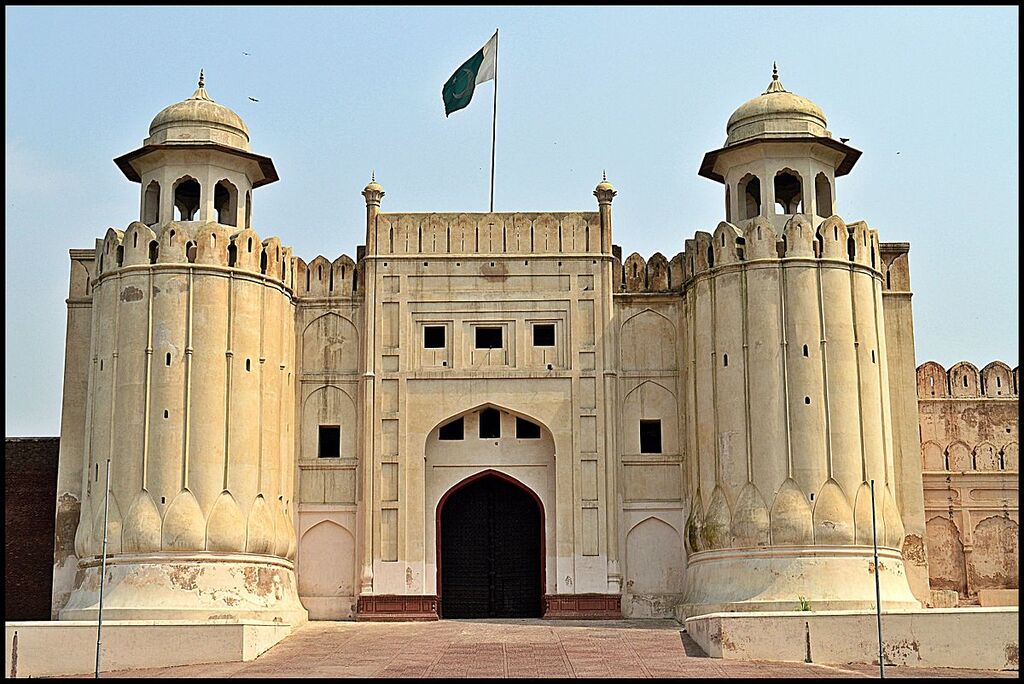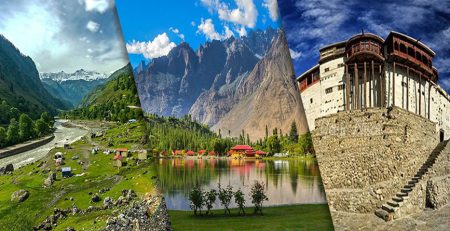7 Historical Places Must Visit in Lahore
Lahore is the capital of the Pakistani province of Punjab and is the country’s 2nd largest city after Karachi, in addition to being the 26th largest city in the world. Lahore is one of Pakistan’s wealthiest cities with an estimated GDP (PPP) of $84 billion as of 2019. It is the largest city and historic cultural center of the greater Punjab region, and is one of Pakistan’s most socially liberal, progressive, and cosmopolitan cities.
This is certainly true if you’re someone with an interest in history, as the number of locations of historical interest demonstrates. Visitors to Lahore will find that there’s something worth seeing wherever you turn, with a range of landmarks that include historic mosques, gardens, and walking trails among the key historical places in Lahore, Pakistan. Take a look at some of the options below, and you’ll find that Lahore is a destination worth checking out.
Lahore Fort
Lahore Fort was the residence of Mughal emperors in ancient times. It is also a UNESCO protected site, owing to its historical significance. The fort became popular during the reign of Akbar but its presence dates back to the 11th century. To see the true and beautiful colors of Pakistan, one has to visit Lahore.

Built in 1566, Lahore Fort has seen a long and varied history. It was built during the reign of Emperor Akbar, and upon its construction contained numerous motifs of both Islamic and Hindu nature. In the nearly 500 years since its construction, the Fort has seen additions made under both Moghul and Sikh empires – and it is the outstanding collection of Moghul artefacts that was most influential in earning it the status of a UNESCO World Heritage site in 1981. The beautiful chambers inside are well worth seeing.
Samadhi of Ranjit Singh

It is an 18th-century building that has the funerary urns of the Sikh ruler Ranjit Singh who died in 1839. The samadhi is located right next to the famous Lahore Fort and Badshahi Mosque. The building is the epitome of Hindu, Islamic, and Sikh architecture, design, symbolism, and motifs. The building is composed of gilded fluted domes and cupolas.
The front side of the building has a doorway which is decorated with the images of Ganesh, Devi, and Brahma. The wooden panels on the ceiling are decorated with stained glass work, while the walls are richly decorated with floral designs. The ceilings are decorated with glass mosaic work. Lahore is famous for its diverse food culture. From continental to desi food restaurants, Lahore has some of best hi-tea places where people can enjoy food.
Masjid Wazir Khan
The Wazir Khan Mosque is a historical mosque built in the 17th century. The construction of the mosque started during the rule of the Mughal Emperor Shah Jahan. The construction of the Wazir Khan Mosque began in 1634 C.E. and was completed in 1641. The mosque is known among the masses because of its tile work known as Kashi-Kari.
The mosque is built on an elevated plinth, with the main portal opening onto the Wazir Khan Chowk. The area is surrounded by several local shops and hawkers. For shopping from top brands, there are many malls in Lahore you can visit. The outer perimeter of the Wazir Khan Mosque measures 279 feet (85 m) by 159 feet (48 m).

Due to Lahore’s rich and varied history – which has seen it ruled by turns under Muslim, Moghul, and Sikh empires – there are examples of different types of architecture dotted around the city. Perhaps the most famous Moghul-era mosque in the city is the stunning Masjid Wazir Khan with its exceptional, intricate tiling. The nearby Shahi Hammam baths add to the majestic feel that pervades around the mosque, and the building is surrounded by 32 ornate study cloisters and four 107-foot (32.6 m) minarets.
Badshahi Mosque
The Badshahi Mosque is a Mughal-era congregational mosque in Lahore, capital of the Pakistani province of Punjab, Pakistan. The mosque is located west of Lahore Fort along the outskirts of the Walled City of Lahore, and is widely considered to be one of Lahore’s most iconic landmarks.

Minar-e-Pakistan
Minar-e-Pakistan is a national monument located in Lahore, Pakistan. The tower was built between 1960 and 1968 on the site where the All-India Muslim League passed the Lahore Resolution (which was later called the Pakistan Resolution) on 23 March 1940 – the first official call for a separate and independent homeland for the Muslims of British India, as espoused by the two-nation theory. The resolution eventually helped lead to the emergence of an independent Pakistani state in 1947.

Haveli of Nau Nihal Singh

The next historical site in Lahore which is on our list is the Haveli of Nau Nihal Singh. The place dates back to the 19th century and is the epitome of the finest Sikh architecture and culture. It is also the only Sikh-era haveli that preserves its original ornamentation and architecture. The haveli was constructed during the 1840s for Nau Nihal Singh, grandson of the founder of the Sikh Empire, Maharaja Ranjit Singh. Currently, the Victoria Girls’ High School operates in the building. The haveli consists of a rectangular structure. It has a facade that is divided into two sections.
Shalimar Garden
The iconic complex of Shalimar Gardens was built in 1641-1642. Counted among the biggest tourist attractions in Punjab, Shalimar Gardens in Lahore – more commonly known as Shalimar Bagh – draw a large number of domestic and foreign tourists throughout the year. In fact, you can’t complete your trip to Lahore without visiting this stunning terraced garden with mesmerizing fountains, breathtakingly beautiful foliage, exquisitely designed pavilions and much more.

Shalimar Gardens is also known as “the lost paradise” that were made during the reign of Mughal emperor Shah Jehan. Lahore sometimes referred to as the city of gardens is a city packed with Mughal history their architectural excellence and grandiosity can be seen from monuments like Badshahi Mosque, Lahore Fort, Wazir Khan mosque and Jahangir’s tomb. According to historians the fretwork on the walls of these gardens is one of the most beautiful in the Islamic world. These wondrous paradise gardens were built to inspire awe in people just like the Zen gardens of Japan. Shalimar Gardens were unique in the way they were built.








Leave a Reply